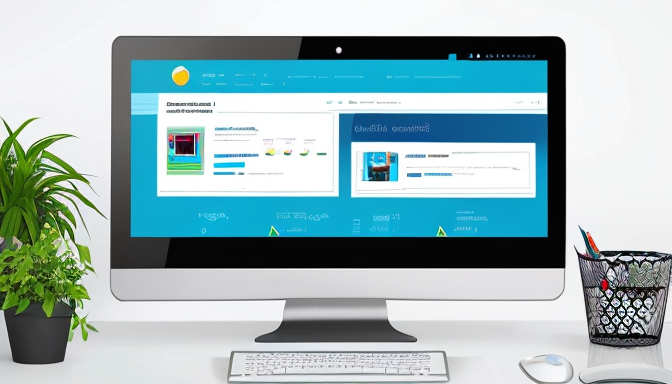When it comes to building a website, the architecture of your chosen platform can make a world of difference. Joomla, a powerful content management system, is renowned for its flexible and robust structure. At its core, Joomla is built on a solid foundation that includes key components such as components, modules, plugins, and templates. These elements work together seamlessly, allowing developers and users to create highly functional websites.
Let’s break it down a bit. The Model-View-Controller (MVC) pattern is central to Joomla’s architecture. This design separates the data (model), user interface (view), and the business logic (controller), making it easier to manage and develop complex applications. Imagine trying to bake a cake without separating the ingredients; it would be a messy disaster! Similarly, MVC keeps Joomla organized and efficient.
Here’s a quick look at how these components interact:
| Component | Function |
|---|---|
| Components | Main building blocks for managing content. |
| Modules | Extensions that display content in specific positions. |
| Plugins | Add functionality by triggering specific events. |
| Templates | Control the look and feel of your site. |
By understanding these structural elements, you can harness the true potential of Joomla for your web projects. So, whether you’re a seasoned developer or just starting out, diving into Joomla’s architecture is like unlocking a treasure chest of possibilities!
Understanding Joomla’s Framework
Joomla is not just another content management system; it’s a powerful framework that empowers users and developers alike. At the heart of Joomla’s architecture lies the MVC (Model-View-Controller) design pattern, which separates the application logic from the user interface. This separation allows for better organization and easier maintenance of the code. Imagine it as a well-organized library where every book (or piece of code) has its own designated shelf, making it easy to find and update when necessary.
Let’s break down the key structural elements of Joomla:
- Components: These are the heart of Joomla, responsible for rendering content on the website. Think of them as the main actors in a play, each with a specific role to perform.
- Modules: These are like the supporting cast, providing additional functionality and content presentation. They can be positioned in various places on your site, enhancing the user experience.
- Plugins: These are the behind-the-scenes crew, executing specific tasks when certain events occur, such as user logins or page loads. They add flexibility and power to your site.
- Templates: The visual aspect of your site is managed by templates, which dictate how your content is displayed. They are the wardrobe of your site, setting the tone and style for your online presence.
Understanding these elements allows you to harness the full potential of Joomla. By effectively utilizing components, modules, plugins, and templates, you can create a website that is not only functional but also tailored to your specific needs. So, why settle for ordinary when you can build something extraordinary with Joomla?

Enhancing Your Joomla Experience
When it comes to enhancing your Joomla experience, understanding its structural elements is crucial. Joomla’s architecture is built around a robust framework that includes components, modules, plugins, and templates, all working together like a well-oiled machine. Think of components as the main engines of your website; they handle the heavy lifting, managing everything from content to user interactions. Modules, on the other hand, act like the dashboard, presenting information in a layout that’s easy to navigate and engaging for users.
Plugins are the secret sauce that adds functionality, allowing you to extend Joomla’s capabilities without reinventing the wheel. They can do everything from optimizing your site for SEO to integrating social media feeds. If you’re looking to make your site not just functional but also visually appealing, templates play a vital role. They dictate the look and feel of your website, so choosing the right one can make a world of difference.
Additionally, Joomla follows the MVC (Model-View-Controller) pattern, which separates the logic of your application from the user interface. This means that developers can work on the backend without affecting how users interact with the frontend. It’s like having a backstage crew that makes sure the show runs smoothly while the audience enjoys the performance. By leveraging these elements effectively, you can create a Joomla site that is not only user-friendly but also tailored to your specific needs.
Frequently Asked Questions
- What is Joomla’s architecture?
Joomla’s architecture is built on a robust MVC (Model-View-Controller) framework. This structure separates the data (Model), the user interface (View), and the business logic (Controller), making it easier for developers to manage and scale their applications efficiently.
- How can I enhance my Joomla experience?
You can enhance your Joomla experience by exploring various extensions and templates available in the Joomla marketplace. These tools allow you to customize the functionality and appearance of your website, ensuring it meets your unique needs and stands out visually.
- Is Joomla suitable for beginners?
Absolutely! Joomla is user-friendly and offers a wealth of resources for beginners. With its intuitive interface and extensive documentation, even those new to web development can create and manage websites with ease.
- Can I use Joomla for e-commerce?
Yes, Joomla is a great choice for e-commerce websites! With various extensions like VirtueMart or HikaShop, you can set up a fully functional online store that is easy to manage and customize.